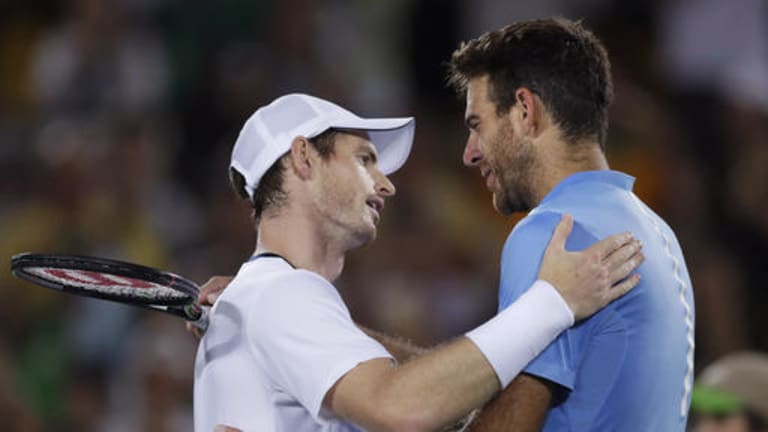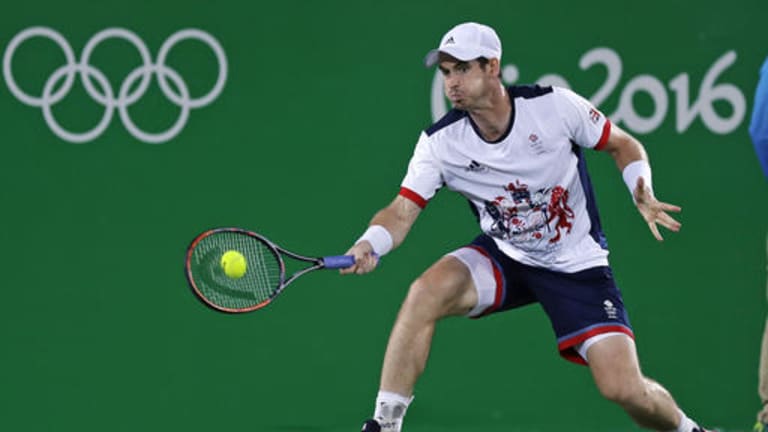The day before, after beating Rafael Nadal in a classic, three-hour semifinal, Delpo had said that he would be satisfied, after all that he been through, with second place. Except that that’s not how he played this match. Del Potro spent much of its four hours looking like he was on the verge of collapse; when he wasn’t leaning on the net after a grueling point, he was leaning on his racquet. But as hard as Murray tried to take his legs out from under him, the big man refused to fall. He was lifted up by a rowdy pro-Argentine crowd that chanted his name all the way through the match and into the medal ceremony.
Del Potro is known as the most ferocious ball-basher in the sport’s history, but he played some very clever and canny tennis throughout the Olympics, and especially in the final. The fact that he can’t hit his backhand at top speed because of his surgically repaired left wrist would seem to be a serious liability. But somehow he managed to make it a strength. Del Potro essentially turned himself into two players against Murray: From the forehand side, he looked for openings and crushed the ball into them. From the backhand side, Delpo sliced the ball softly crosscourt, forced Murray to hit up on it with his backhand, and looked for a chance at a forehand. Murray was either waiting for a puff ball and trying to generate his own pace with it, or he was trying to catch up to a bullet.
Yet, as he has all week, and for most of the year, Murray found a way to solve the difficult problem on the other side of the net. In the third round, he had come back from 0-3 down in the third set to Fabio Fognini, and had survived a furious surge from Steve Johnson to win a final-set tiebreaker in the quarters. At times in both of those matches, Murray had looked to be out of options and emotionally spent, and his opponent had looked ready to run away with it. But each time Murray had stopped his opponent’s momentum cold.


